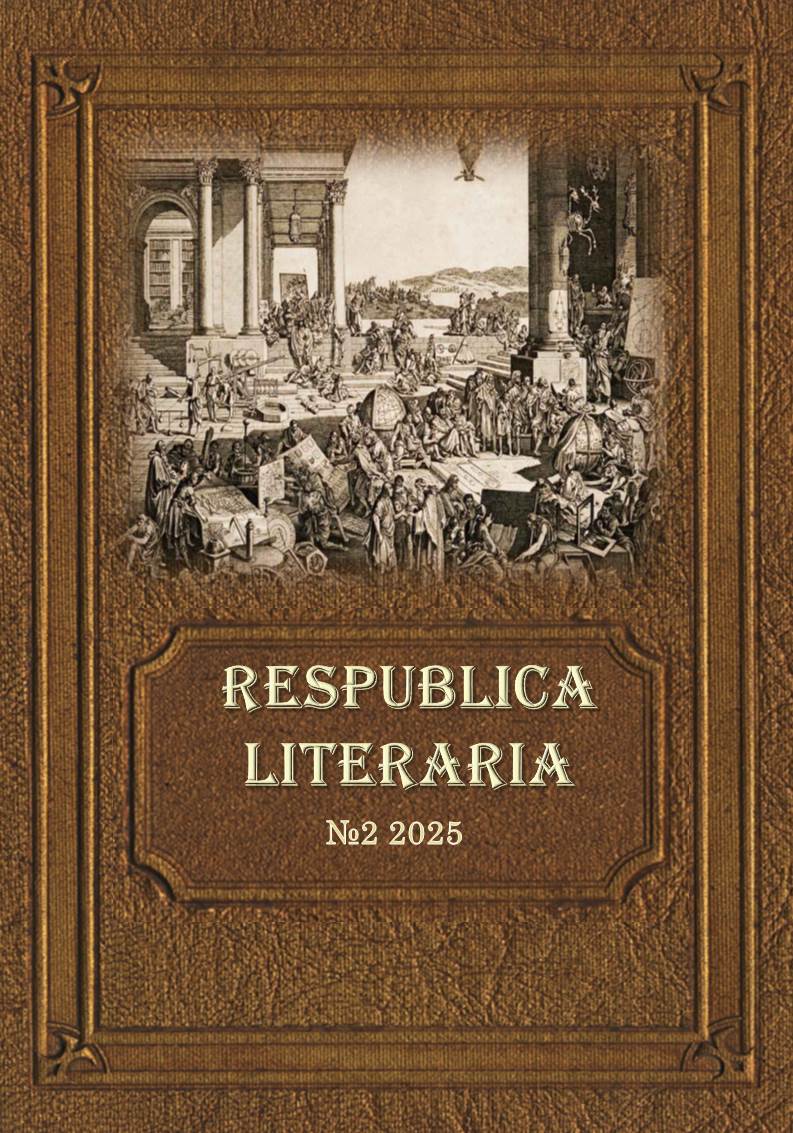Transformation of Ethnosocial Dynamics and Identity Models in the Era of Global Challenges
DOI:
https://doi.org/10.47850/RL.2025.6.2.135-143Keywords:
ethnosocial dynamics, ethnicity, identity, identity models, social construction, multiculturalism, integrationAbstract
In the context of globalization, digitalization, migration crises, identity ceases to be static, it turns into a hybrid construct. The relevance of the topic is associated with the growth of interethnic conflicts, the search for a balance between multiculturalism and integration, as well as rethinking traditional paradigms in anthropology and sociology. The purpose of the study is to analyze ethnosocial dynamics and models of identity. The objectives of the study are aimed at revealing identity as a socio-cultural phenomenon that records an individual's belonging to a group, people, a certain political system, factors of ethnosocial dynamics. Substantial features of identity are its community and distinctiveness. Community is understood as territorial unity, kinship of history, language, culture, etc., which can be presented both in qualitative and quantitative descriptions, and distinctiveness records the similarity or difference of one ethnic group (nation) from another. The methodological basis of the study was general philosophical methods, systemic, structural-functional and activity approaches, principles of objectivity, universal connection and others. From the standpoint of philosophical knowledge, the problems of ethnosocial dynamics and models of identity in the modern era are considered.
References
Бауман, З. (2019). Ретротопия. Пер. с англ. В. Л. Силаевой. Под науч. ред. О. А. Оберемко. М.: ВЦИОМ. 160 с. (Серия «CrossRoads»).
Bauman, Z. (2019). Retrotopia. Silaeva, V. L. (transl.), Oberemko, O. A. (ed.). Moscow. 160 p. (Series “CrossRoads”). (In Russ.)
Безертинов, Р. Н. (2004). Тэнгрианство – религия тюрков и монголов. Научно-популярное издание. 2-ое изд., доп. Казань: Слово. 448 с.
Bezertinov, R. N. (2004). Tengrianism – the Religion of the Turks and Mongols. Popular Science Edition. 2nd ed., suppl. Kazan. 448 p. (In Russ.)
Гегель, Г. В. Ф. (1974). Энциклопедия философских наук. Т. 1: Наука логики. М. 452 с.
Hegel, G. W. F. (1974). Encyclopedia of Philosophical Sciences. Vol. 1. Science of Logic. 452 p. Moscow. (In Russ.)
Жеребило, Т. В. (2011). Термины и понятия лингвистики. Общее языкознание. Социолингвистика. Словарь-справочник. Назрань: Пилигрим. 280 с.
Zherebilo, T. V. (2011). Terms and Concepts of Linguistics. General Linguistics. Sociolinguistics. Dictionary-Reference. Nazran. 280 p. (In Russ.)
Коротин, В. О. (2014). Модели национальной идентичности в современном обществе. Вестник Поволжской академии государственной службы. № 4(43). С. 128-133.
Korotin, V. O. (2014). Models of National Identity in Modern Society. Bulletin of the Volga Region Academy of Public Administration. No. 4(43). Pp. 128-133. (In Russ.)
Лотман, Ю. М. (1992). Избранные статьи: в 3 т. Т. I: Статьи по семиотике и топологии культуры. Таллин: Изд-во «Александра». 479 с.
Lotman, Yu. M. (1992). Selected Articles. In 3 vols. Vol. I. Articles on Semiotics and Topology of Culture. Tallinn. 479 p. (In Russ.)
Национальная идентичность и коллективная память: между прошлым и будущим. Коллективная монография. (2022). Под ред. Т. А. Сенюшкиной. Симферополь. 320 с.
Senyushkina, T. A. (ed.). (2022). National Identity and Collective Memory: Between the Past and the Future. Collective monograph. Simferopol. 320 p. (In Russ.)
Нахушева, М. С. (2006). Культурная динамика этноса. Новые технологии. № 1. С. 49-52.
Nakhusheva, M. S. (2006). Cultural Dynamics of the Ethnos. New Technologies. No. 1. Pp. 49 52. (In Russ.)
Рикёр, П. (2008). Я – сам как другой. М.: Изд-во гуманит. лит. 416 с.
Ricoeur, P. (2008). Oneself as Another (Soi-même comme un autre). Moscow. 416 p. (In Russ.)
Стефаненко, Т. Г. (1999). Социальная психология этнической идентичности. Дис. … д-ра психол. наук. М. 529 с.
Stefanenko, T. G. (1999). Social Psychology of Ethnic Identity. Doctor’s thesis. Moscow. 529 p. (In Russ.)
Фадлун, Э. (1991). Образ волка, отображенный в фольклоре и декоративно-прикладном искусстве тюркских народов мира. Türk Duniyasy. № 1. С. 178-190.
Fadlun, E. (1991). The Image of the Wolf, Reflected in the Folklore and Decorative and Applied Arts of the Turkic Peoples of the World. Türk Duniyasy. No. 1. Pp. 178-190. (In Turkish)
Downloads
Published
How to Cite
Issue
Section
License

This work is licensed under a Creative Commons Attribution-NonCommercial-NoDerivatives 4.0 International License.
https://oc.philosophy.nsc.ru/remote.php/webdav/%D0%94%D0%BE%D0%B3%D0%BE%D0%B2%D0%BE%D1%80%20%D1%81%20%D0%B0%D0%B2%D1%82%D0%BE%D1%80%D0%BE%D0%BC%20RL-%D0%BF%D1%80%D0%B0%D0%B2.doc





